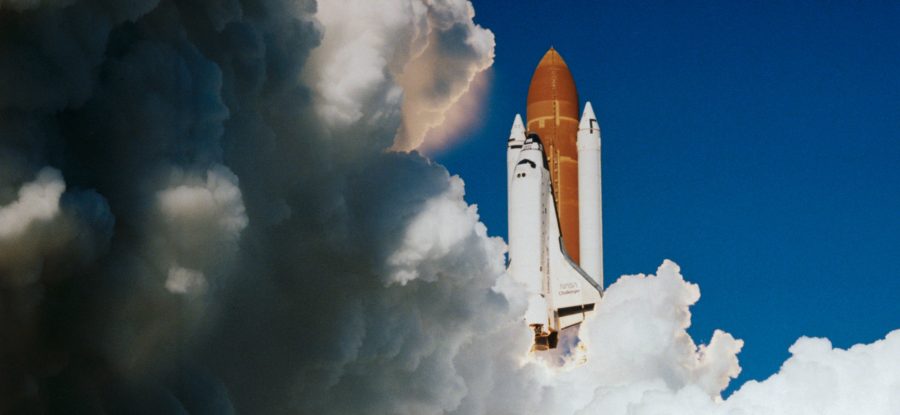Eighteen years ago today, on Saturday, February 1, 2003, the space shuttle Columbia broke apart on reentry into Earth’s atmosphere at the end of the STS-107 mission. Burning debris of the shuttle rained down on Texas. All seven crew members on board were killed in the disaster. The accident investigation afterward concluded that a piece of insulating foam that had fallen off the shuttle’s external tank at launch had damaged the leading edge of the port wing; on reentry, hot gases entered the damaged wing and tore the shuttle apart.
It was the second time that a space shuttle had been destroyed on a mission, leading to the deaths of all of its crew. Seventeen years earlier, on Tuesday, January 28, 1986, space shuttle Challenger exploded shortly after launch on the STS-51L mission. One of the solid rocket boosters had burned through the O-ring joining two of its sections, creating a jet of flame that blew up the external tank and destroyed the shuttle.
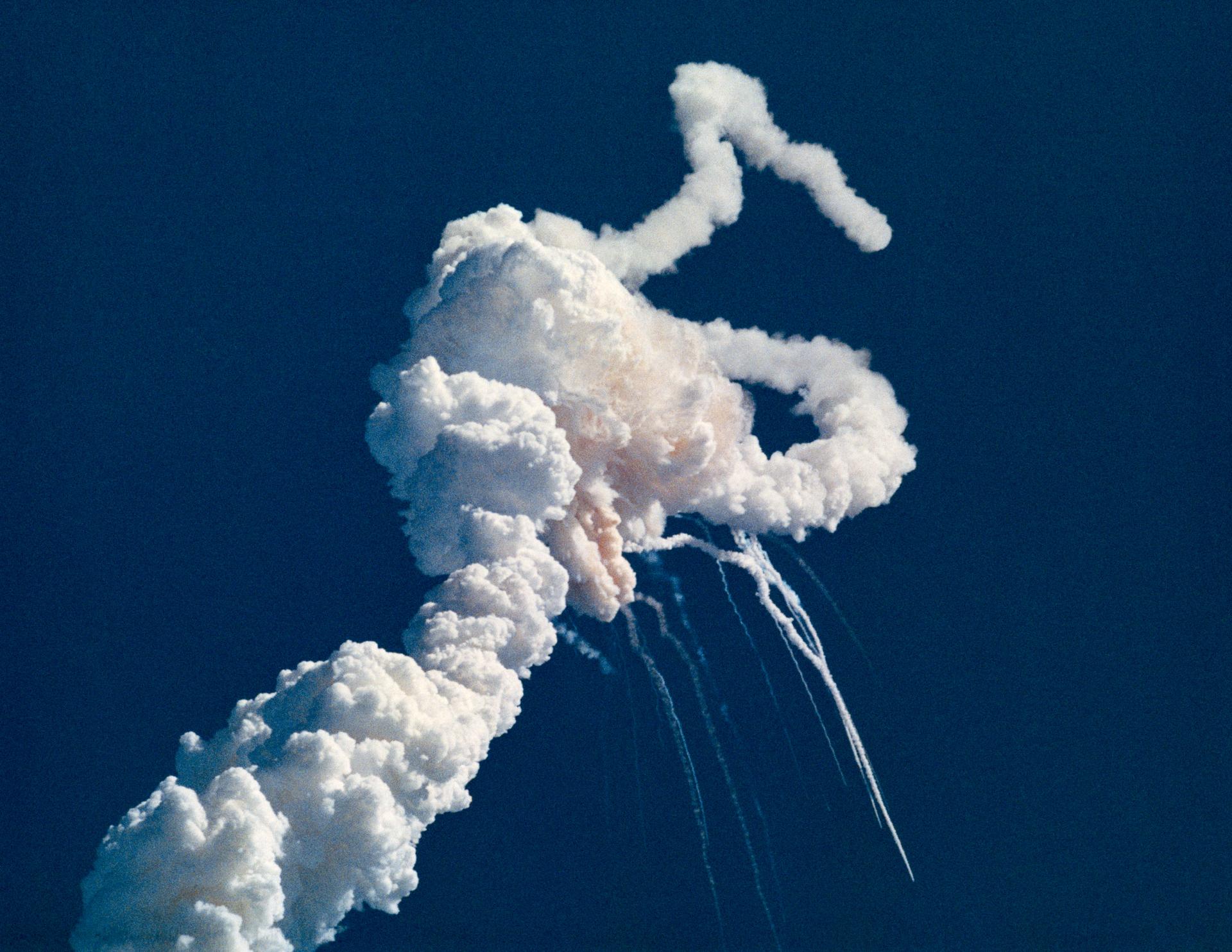
The Challenger explosion, January 28, 1986. (Source: NASA)
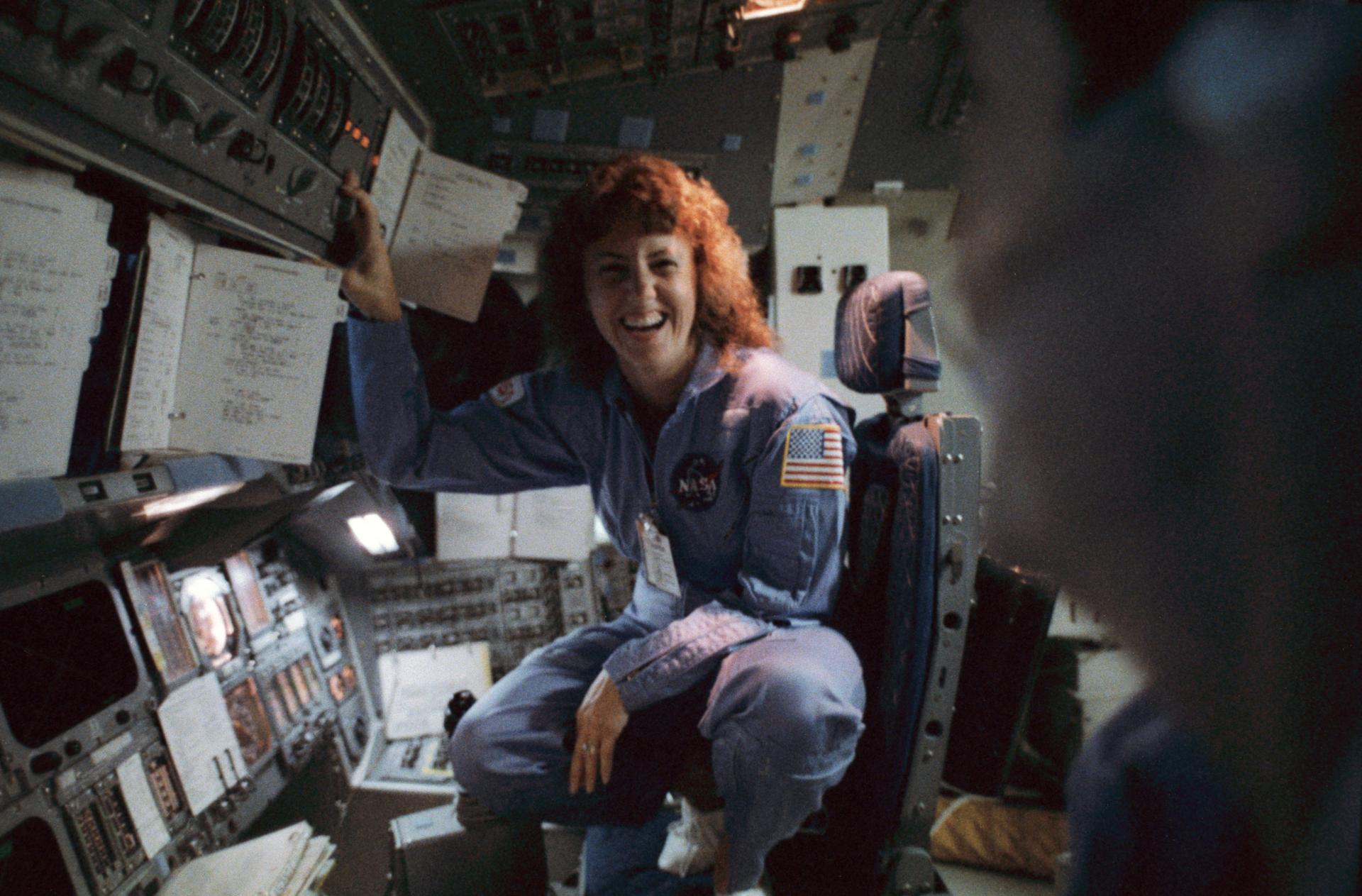
Christa McAuliffe training in the space shuttle simulator for the STS-51L mission. She would have been the first teacher in space. Her backup for this mission, Barbara Morgan, later became an astronaut and flew into space on the STS-118 mission in 2007. (Source: NASA)
Both tragedies were important events for NASA, leading to redesigns of the shuttle and managerial reorganizations to prevent the kind of group-think that had allowed the disasters to happen in the first place. Challenger was replaced by a new shuttle, Endeavour, while the Columbia tragedy led to the eventual retirement of the Space Shuttle fleet and their replacement by commercially-operated space capsules.
For the American public at large, though, the two tragedies had markedly different effects. Challenger was a national calamity that left deep emotional scars on the public psyche. The launch was carried on national television and literally millions of people watched the astronauts die in real time. These included school children in their classrooms, because one of the crew members of Challenger was America’s first teacher-astronaut, Christa McAuliffe. Challenger exploded before I was even born (I was born later that year), but I feel like I remember it because it was talked about as I was growing up.
The loss of Columbia was also a national tragedy, but its influence was not as long-lasting. Columbia made front-page headlines for weeks after the disaster. Like Challenger, Columbia got a eulogy from the president (an uncharacteristically eloquent George W. Bush, quoting from Isaiah 40). The astronauts’ names are inscribed on the space memorial mirror at Kennedy Space Center and there is a monument honoring them at Arlington National Cemetery. But Columbia isn’t remembered like Challenger was, even though the tragedy is more recent. I doubt that children born in 2003 grew up hearing about Colombia like I heard about Challenger.
Why is Columbia not as well-remembered as Challenger? I think there are several reasons. One of them is that the American public was not as aware of the mission as it was going on. It was not high-profile because there was no teacher-astronaut among the crew. Even though I was a space enthusiast, I hadn’t really been following the mission and I’d only read one newspaper article about it. No school children watched Columbia crash in their classrooms. (It was a Saturday anyway)
When Challenger exploded, it was something new under the sun. America in the 1980s had been unstoppable. The economy was booming. The American military was stronger than ever. The Space Shuttle was making access to low-earth orbit routine and easy. There was nothing we couldn’t build or do—until the Challenger tragedy showed that there must be limits to the United States’ technological hubris. (The Chernobyl nuclear disaster in the same year had a similar effect on the Soviet Union.)
When Columbia crashed in 2003, America was no longer unassailable. The country was in the midst of crisis. Columbia crashed less than a year and a half after 9/11 and a month and a half before the US invasion of Iraq. The United States was preoccupied.
Do a web search for Challenger and the ill-fated space shuttle will show up on the top of the results. But if you search for Columbia, you will get results for a river in the Northwest, multiple US towns and cities (including the capital South Carolina), a country in South America (albeit with a slightly different spelling), a sportswear company, and on and on. You may never get results for the shuttle, unless you make your search more specific.
This is an accident of vocabulary, but it is also telling. Perhaps there is only so much room in American cultural memory, and one tragedy must represent several. Challenger represents itself but also space tragedies in general. When we remember Challenger, in a way we are remembering Columbia as well.
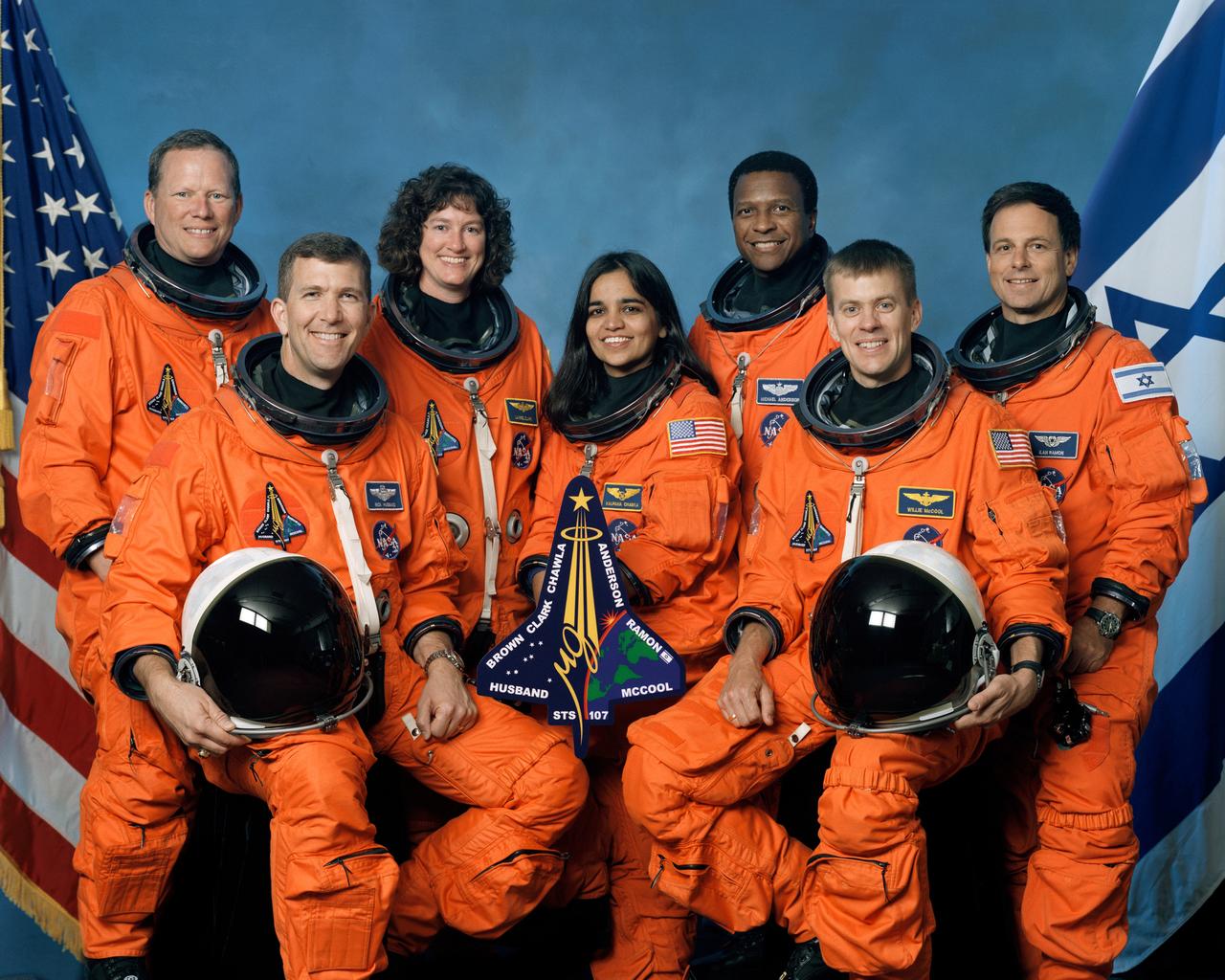
The crew of STS-107, in their official NASA portrait before their mission. Left to right: David M. Brown, Rick D. Husband, Laurel B. Clark, Kalpana Chawla, Michael P. Anderson, William C. McCool, Ilan Ramon. (Source: NASA)
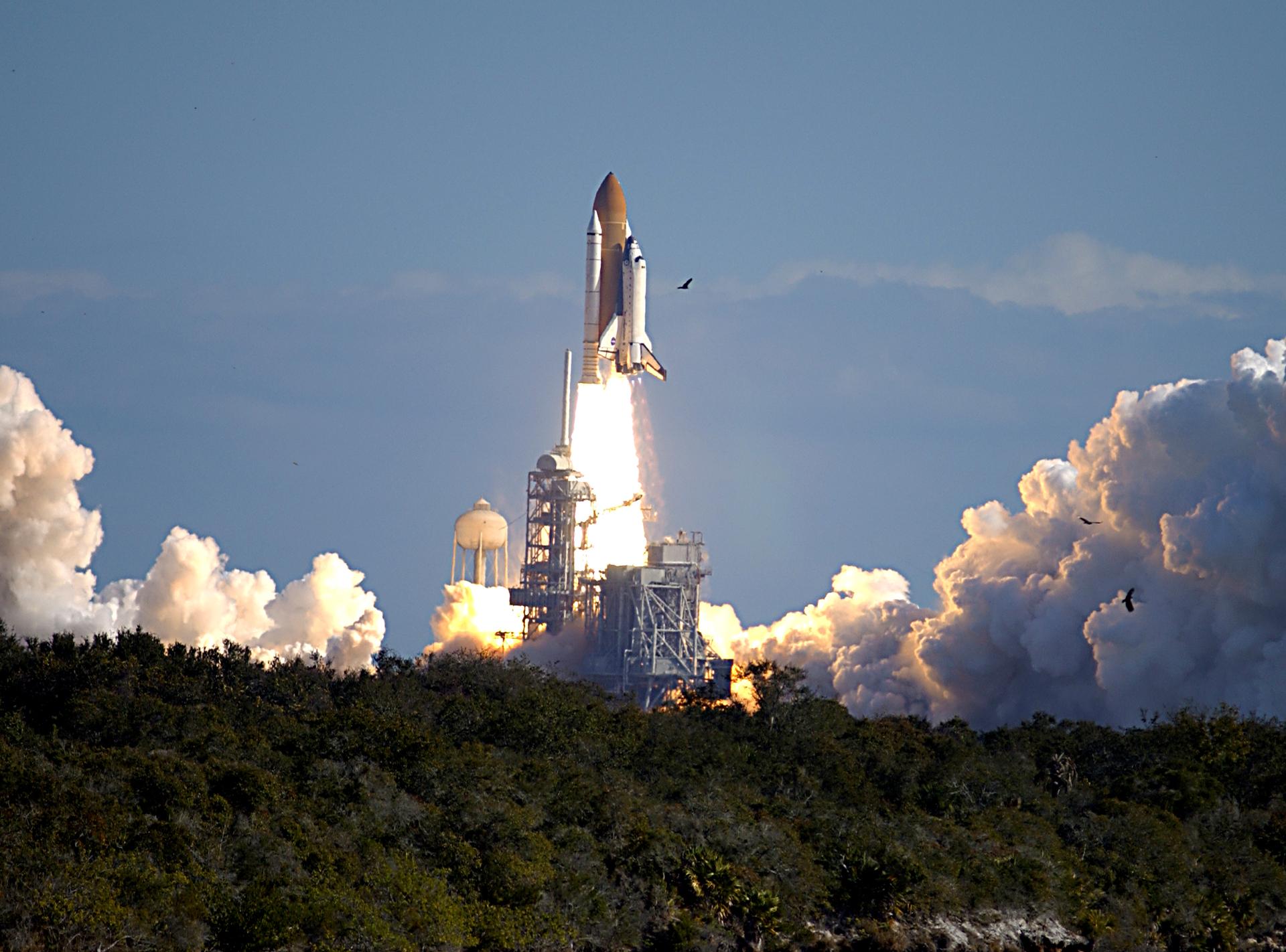
Space Shuttle Columbia lifts off on its last mission, January 16, 2003. (Source: NASA)

